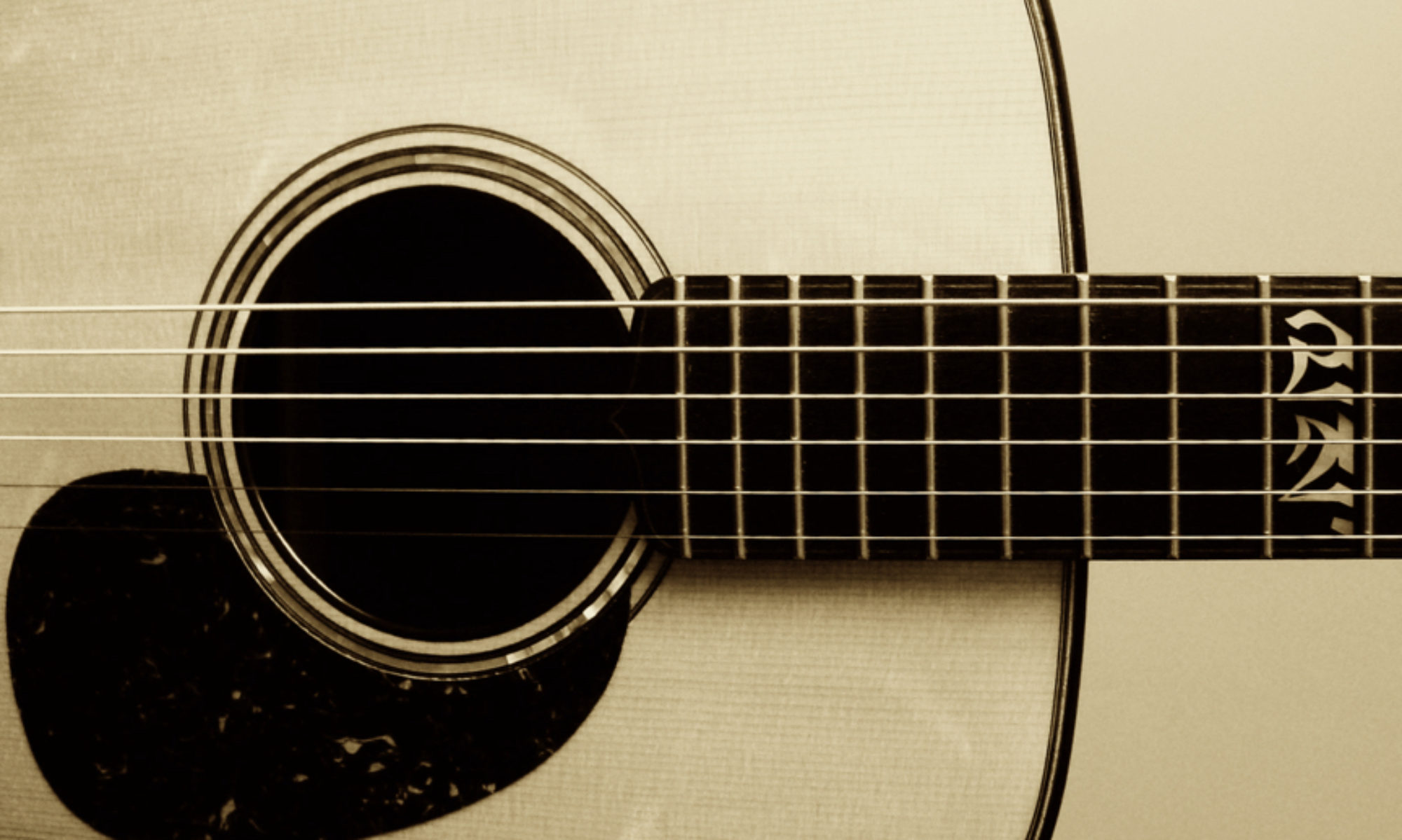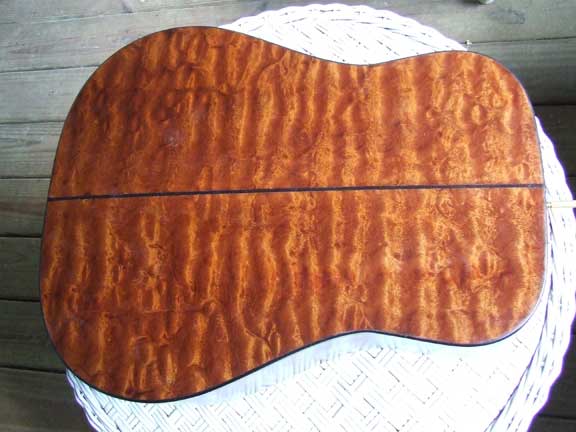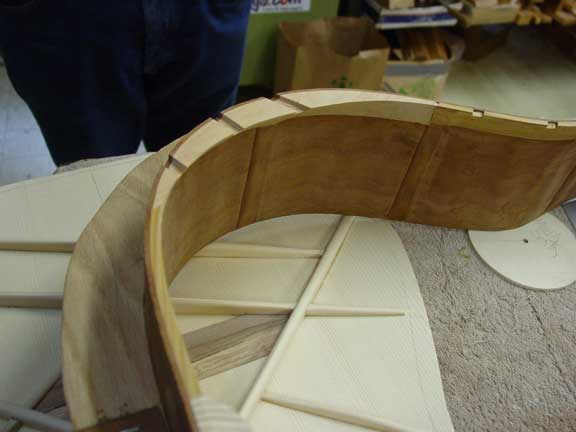As I write this, it’s almost exactly three weeks since I received my first custom hand-built guitar, Ken Miller #139. Having followed its development closely throughout the build, even to the extent of traveling to Florida to visit Ken’s shop, I had every reason to believe that I would be extremely pleased with the results. But however high my expectations, I was completely unprepared for what a wonderful instrument it turned out to be. Having had some time now to get to know her a bit, I’m taking time to write down some of my impressions. I’m also adding a few more photos.
First, this guitar is simply gorgeous to look at. Although it doesn’t show especially well in these pictures, the Adirondack spruce top has a tight grain interspersed with subtle bear claw figuring, with more prominent figuring across the lower bout.

Equally subtle are the blue-green hues of the abalone rosette.
These somewhat understated features are contrasted against the powerful visual statement made by the back and sides. Fashioned from the highly figured quilted Honduran mahogany of “The Tree,” they can be almost dizzying to look at.
The bindings throughout, as well as the armrest bevel and the headstock veneer, are of Brazilian rosewood. Wooden purflings are teal and black. This photo also shows some of the bear claw figuring in the spruce top.
The fingerboard is ebony bound by Brazilian, with stainless steel frets. At the twelfth fret, more abalone inlay: the Tibetan word for “karma.”
But of course the true measure of any instrument is how well it performs, and here is where #139 really shines. The fingerboard is extremely easy and the set-up is great. This combined with it’s light weight make it a very comfortable guitar to play, made even moreso by the armrest bevel.
Most impressive of all, though (saving the best for last), is the sound. I’ve played many, many guitars over the years, and recently tried out many more before I began working with Ken. It is not an overstatement to say that none of them matched #139 for tone. All my life I’ve heard guitarists say a given guitar “rings like a bell,” and now I know what they mean. The trebles here are clean and bright, and the mids full and rich. The bass has a woody, robust complexity without any sacrifice in tonal clarity. Across the entire fretboard the guitar responds to the lightest touch with wonderful tone and tremendous volume and sustain.
If it is not already obvious, I will state it plainly: I don’t believe I could be any more pleased with or excited about a guitar than I am with #139.








































